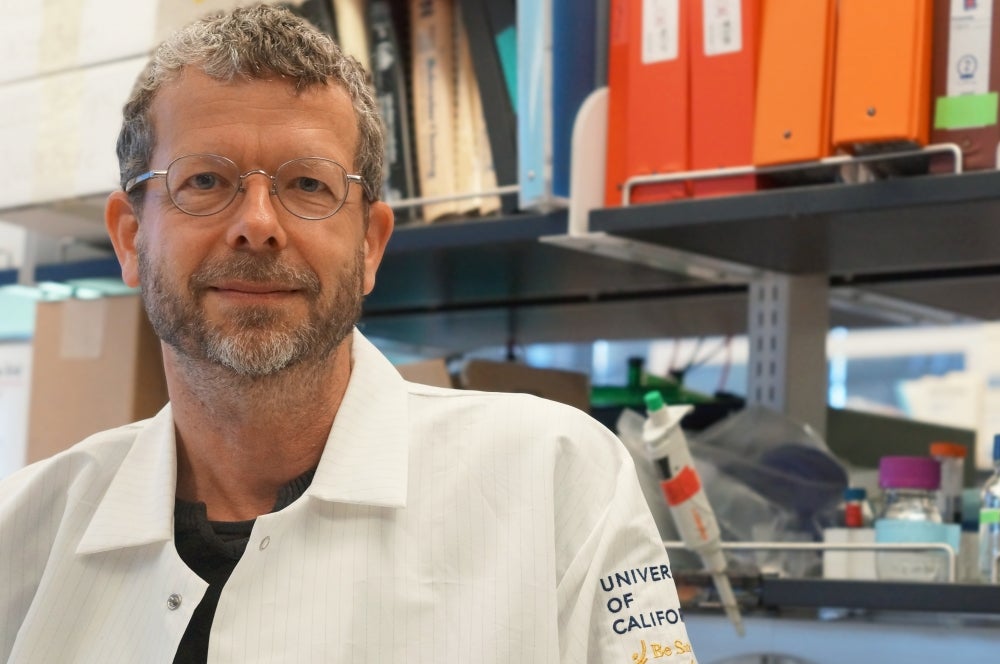
An ‘Amazing’ Result

A three-month clinical study on dietary interventions to help treat polycystic kidney disease (PKD) indicates that not only is dietary intervention feasible, it also appears to have resulted in beneficial outcomes for its participants. The results pave the way toward using diet as a way to effectively manage the disease, which affects more than 12 million people worldwide — more than half a million of them in the U.S. alone.
“The results are in and they’re pretty amazing,” said UC Santa Barbara molecular biologist Thomas Weimbs.
Weimbs, with Dr. Roman-Ulrich Müller and collaborators at the University of Cologne, designed the 90-day study on the feasibility and tolerability of ketogenic metabolic therapies like the low-carbohydrate ketogenic diet and periodic fasting in efforts to treat PKD. The data gathered in this randomized, controlled interventional trial are a step toward larger studies to confirm the diet’s clinical effectiveness. The German research team and Weimbs presented the late-breaking results at the American Society of Nephrology’s annual “Kidney Week” conference in early November.
The pilot study, conducted with a relatively small group of 63 subjects with PKD, was conducted primarily to assess patients’ tolerance for the diets along with how well subjects are able to stick to the protocols. The results help project how successful a larger study would be in the future.
“If a patient says, ‘I quit,’ after a couple of months and, ‘I can’t do this anymore,’ then the feasibility isn’t there,” said Weimbs, who with his lab first noticed the effects of diet on the growth and progression of PKD in mouse models in 2016.
A hereditary disease, PKD is a condition in which painful, fluid-filled cysts develop in the kidneys. As these cysts grow, they enlarge the kidneys and rob them of their vital functions. Patients with advanced PKD eventually have to undergo dialysis and kidney transplants, and often experience other complications, including high blood pressure, vascular problems and cysts in the liver. The feasibility and tolerability of both ketogenic and periodic fasting diets, Weimbs said, “don’t seem to be a problem.”
According to the study, both types of diet were “rated as feasible by patients,” although the ketogenic diet appeared to be easier to adhere to. Importantly, long-term use also appears to be possible from the patient perspective, especially if clinical trials show that the diet is beneficial in treating PKD.
What the researchers weren’t expecting to see over the relatively short timeframe were improvements in patients’ clinical outcomes, especially with the ketogenic diet.
“Dr. Müller’s team measured all the hard outcomes as well,” Weimbs said, referring to measurements of kidney volume and function. “But we didn’t define them as primary outcomes because we wouldn’t have thought there would have been any change in a short time. The results are much better than anyone would have expected.”
In the study, conducted at the University of Cologne, a population of 63 PKD patients were split into three groups: a ketogenic diet group, who followed the popular high-fat, low-carbohydrate diet; a periodic fasting group, who for three days out of the month restricted all foods except for water; and a control group who was told to eat as they would normally.
“The eGFR values in the control group got a little worse over time, as you would expect,” said Weimbs, explaining that eGFR, or estimated glomerular filtration rate, is a measure of how well the kidneys filter waste out of the blood. It’s a capacity that decreases as the cysts grow — at 15% eGFR, a patient will typically need dialysis.
The participants in the ketogenic diet group, meanwhile, experienced an improvement in their eGFR, with a statistically significant difference compared to the control arm. “If you look at a group of PKD patients, there’s always a random one whose eGFR goes up from one doctor visit to another,” Weimbs said. “But for the average of a whole group to go up, I think that’s pretty unheard of, so it’s quite amazing.”
“The results are truly encouraging,” said Dr. Müller, a research physician at the University Hospital of Cologne who led the clinical trial. “Importantly, a significant part of the benefit in the ketogenic diet group appeared to be maintained even after switching back to a normal carbohydrate-rich diet at the end of the trial. This is important to rule out potential artifacts in the measurements.”
Total kidney volume (TKV) was measured by MRI scanning and is considered one of the best measures of the progression of PKD due to the usually relentless growth of the organs. The control group’s TKV increased, while that of the ketogenic group decreased. The fasting group’s performance was somewhere in between.
While eGFR and TKV outcomes were not the focus of the study, Weimbs said, if patients dieted for longer, the outcomes for the diet groups might have been even better.
As a potential side effect, two patients in the ketogenic diet group experienced symptomatic kidney stones. The incidence of kidney stones is difficult to trace to the diets, Weimbs said, because PKD patients often develop kidney stones over the course of the disease. Nonetheless, he noted, this is an aspect which requires special attention.
“This is something one would want to address in a larger study,” Weimbs said. “Supplementation with the medical food KetoCitra might be important for people who implement a ketogenic diet as it normalizes urine alkalinity and the urine citrate level, and counters the effects of ketogenic diets that are known to increase the risk of kidney stones.” Developed by the Weimbs team and collaborators in Santa Barbara to bring the metabolic benefits of fasting to those with PKD, KetoCitra is available through the UC Santa Barbara spinoff company Santa Barbara Nutrients in conjunction with the medically supervised Ren.Nu diet program.
Dr. Müller’s team is now aiming to obtain funding for a larger trial to confirm the findings over a longer treatment period. “While the results are really promising, they are not enough yet for a general recommendation of ketogenic diets in PKD. To reach this goal, a confirmatory trial should be set up as soon as possible,” Dr. Müller said.
An important overall conclusion of this study, Weimbs added, is that ketogenic diets do not have negative effects on kidney function and cyst growth in PKD. If anything, the study indicates they are beneficial. This counters some of the misconceptions among health practitioners who often confuse the terms “ketosis” and “ketoacidosis,” two similar-sounding words that describe very different conditions. Ketosis, he explained, is a completely normal physiological response to low intake of carbohydrates in the diet, in which the person’s body switches from glucose to ketones for energy. Ketoacidosis, meanwhile, “is a dangerous pathological condition that largely only affects people with Type 1 diabetes.”
Often, ketosis is confused for ketoacidosis. “Perhaps because they rhyme,” Weimbs said. “But ketosis and ketoacidosis are really opposites. That’s one of the purposes of this study — to demonstrate that we are not talking about something dangerous.” Additionally, he said, a frequent misconception is that ketogenic diets are necessarily rich in protein, a dietary pattern that is not recommended for kidney disease patients. However, this completely depends on how the diet is designed. For this study, the diet intervention contained a protein amount in line with current kidney guidelines.
In parallel efforts, Weimbs is planning separate, larger PKD studies in Canada and Japan to assess the effectiveness of the Ren.Nu program. Roughly 80 participants will be recruited for the Canadian study, and 200–300 for the Japanese study. They will be the first clinical studies to assess the long-term effectiveness of the plant-based ketogenic diet with KetoCitra to help counter the effects of PKD, provide the metabolic benefits of ketogenesis and antagonize the dietary conditions that can lead to kidney stones.



